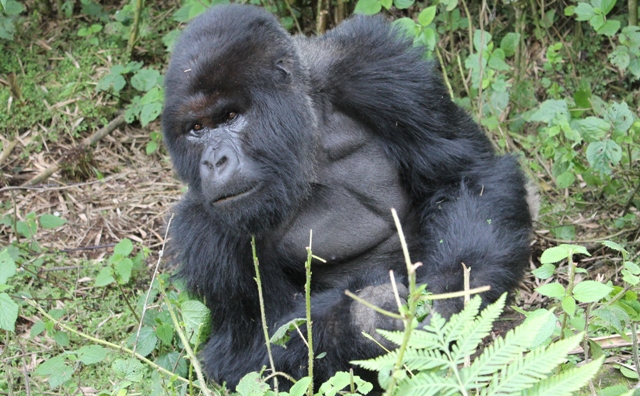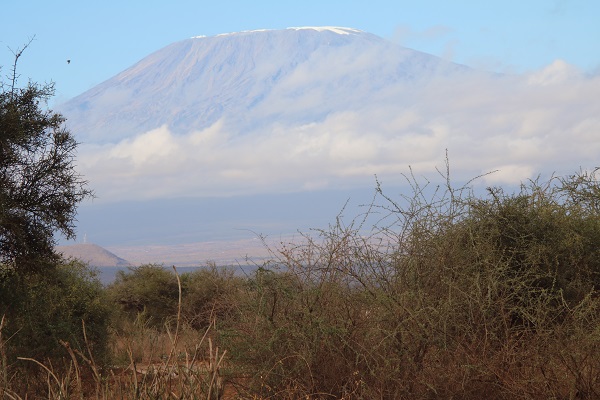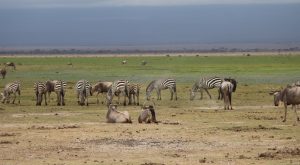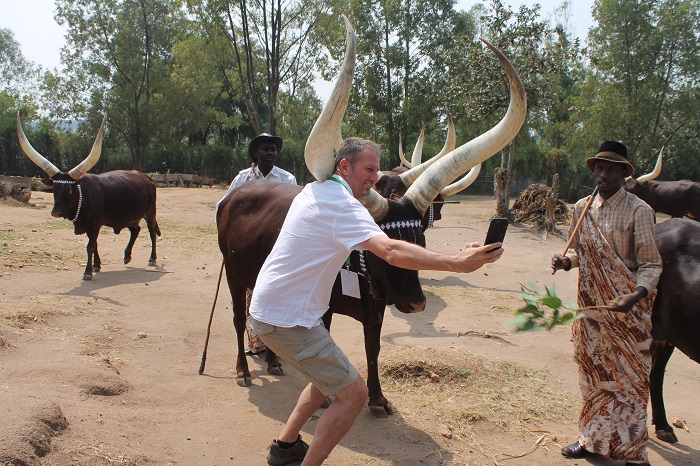
Gorillas are great apes, which are the primates that have no tails. They have the same ancestor with humans and share up to 98% DNA with humans.
Gorillas are sometimes confused with chimpanzees, but gorillas are much bigger and are hairier than the chimps.
Gorillas have no tails like monkeys
The gorilla has become famous through the movie fiction character “King Kong” where it is depicted as a massive ferocious beast in faraway jungles. But how much do you know about gorillas?
Species of gorillas in the world, scientific names and where to find them
There are two species of gorillas, the western gorilla (gorilla gorilla) and eastern gorilla (gorilla berengei)
Western gorillas
The scientific name of western gorilla is gorilla gorilla
Under western gorilla,
Western gorillas are found mostly in West Africa and central Africa
Eastern Gorillas
The scientific name of the eastern gorillas is gorilla berengei
Under the Eastern Gorillas are two sub-species, that is, the lowland gorillas, also called Grauer’s gorillas, and the mountain gorillas.
The mountain gorillas are found in the Virunga mountains range and the Bwindi Impenetrable National Park.
There has been debate among the scientists, some claiming that the Bwindi gorillas are distinctive from the mountain gorillas in the Virunga mountains and should therefore be classified a subspecies of the western gorillas (gorilla beringei bwindi). At the moment no clear distinction has been proved and no split declared.
What do gorillas eat?
Gorillas are vegetarian and their diet largely consists of leaf, stem, root, and short. They do also look out for fruits. In a day the male gorilla will eat up to 34 kg (75 pounds) while the female will eat up to 18kg (40 pounds).
The gorilla eco system provides a perfect balanced diet for gorillas. The plants for each of the above species and subspecies will vary depending on the eco system and the season.
Also, different plants in the gorilla eco system will serve a particular purpose. For example certain plants serve a medicinal purpose of the gorillas, for instance when a gorilla has a stomach ache, the gorillas know when plant provides the remedy and will look out for it.
How much do the gorillas weigh?
Gorillas are the biggest of all primates.
There is a slight difference in size between the two gorilla species, with the western gorillas being slightly bigger than the eastern gorillas.
Male gorillas weigh between 300 pounds (136kg) to 500 pounds (227kg), while females weigh between 150 pounds (68kg) to 200 pounds (91kg)
How tall are gorillas
Males stand up to 6 feet (1.8m) tall, while females stand up to 4.5 feet (1.4 meters) tall.
How strong are the gorillas
Gorillas are also the strongest primates. One adult male gorilla’s strength is said to be equal to the total strength of 8 healthy men.
Mating and reproduction in gorillas
The dominant silverback gorilla has the mating rights in the gorilla group and he can met with any of the females.
The menstrual cycle of gorillas is of similar to that of humans which is a 28-day menstrual cycle.
Once impregnated the gestation period of the gorilla is about 255 days on average, that of humans is approximately 265 days.
Babie gorillas do not leave their mothers’ physical contact for the first 3 – 4 months. After one year the mother shall begin weaning the babies, after around 30 months they will be fully weaned and spend only half of the time with the mothers.
Mother gorillas tend to extend weaning of the males to improve their sons chances of becoming the dominant and having high reproduction success.
At weaning the mother gorilla resumes estrus.
Gorillas go through the following stages of growth:
0 – 4 years: infant – still dependent on the mother still breastfeeding,
4 – 6 years: juvenile – been weaned by the mother and becomes semi-independent,
6 – 8 years: adolescent – who are not yet sextually mature
8 – 10 years: sub-adult – who has become sexually active
10 – 13 years: blackback – sexually mature but males not fully mature physically
13+ years: Silverback male – fully mature males
How long do gorillas live
Gorillas in the wild can live up to 35 years. The known oldest mountain gorilla (Ruhondeza silverback gorilla of Bwindi forest in Uganda) in the wild lived up to 50 years .
How do gorillas move and how fast can a gorilla run
Gorillas are terrestrial primates, meaning they spend much of their time on ground. Because they are big and heavy primates, climbing trees is not the strength of gorillas unlike the chimpanzees and other smaller primates. But they can and do climb trees, more so the young gorillas who will climb to set up a nest for the night, get a good view, swing on vines or pick fruits. The older big ones have to very careful when climbing a tree otherwise their fall is quite heavy and can fatal as some big silverbacks have actually died from falling from trees.
The gorillas travel on ground moving all a fours (quadrupedal mode). Meanwhile on their hands they use their knuckles and not palms, a method called knuckle walking.
Sometimes the gorillas also travel bipedally/upright on their hind legs like humans but this is for a short distance. They cover no more than 3 meters in this mode which often happens whey are chest beating.
How far do gorillas move in a day in the forest?
Gorilla movements are largely dictated by the availability of food. When food is available a gorilla group cover as few as 400 meters in day. The distance covered will also be limited by the landscape of the area, for instance gorillas in bigger mountains will cover a much less distance than those in less mountainous areas.
There are also incidences where gorillas will travel longer distances of several kilometers and this when faced with a safety issue in their location, such as encountering aggressive males that want to take over a group or other dangerous animals that pause a threat to the gorillas.



